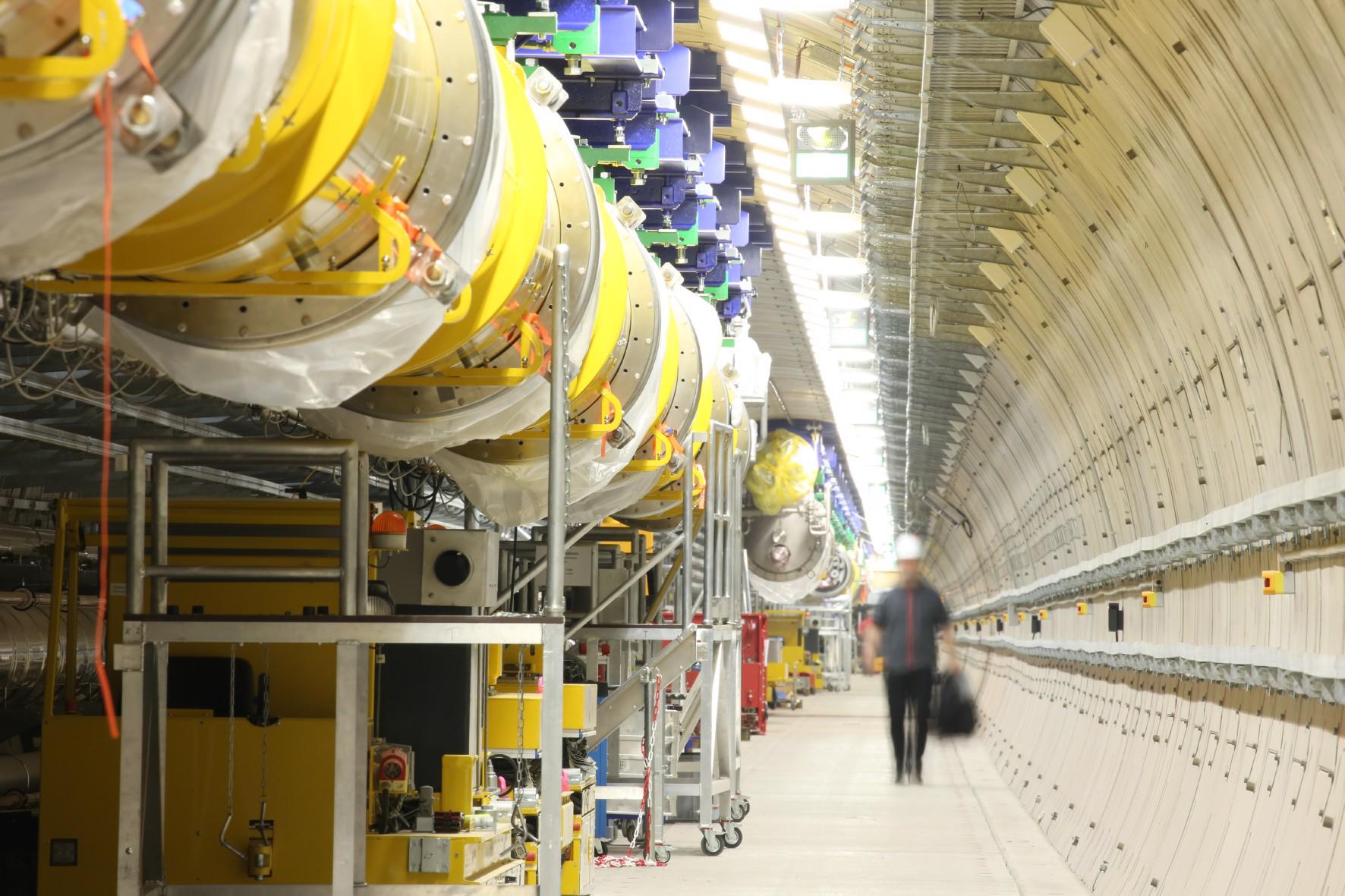Dec 6 2019
High energies are often involved in nuclear physics, as demonstrated by experiments performed to govern the controlled nuclear fusion.
 Accelerator tunnel at the European XFEL. Image Credit: DESY.
Accelerator tunnel at the European XFEL. Image Credit: DESY.
High energies are required to fuse atomic nuclei since powerful electrical repulsion exists between these nuclei, but overcoming this repulsion has been a major challenge. However, fusion can be triggered at lower energies with electromagnetic fields produced, for instance, by advanced free-electron lasers producing X-ray light.
At the Helmholtz-Zentrum Dresden-Rossendorf (HZDR), scientists have now demonstrated a new method to initiate fusion at lower energies. The study has been published in the Physical Review C journal.
Nuclear fusion involves the fusing of a pair of atomic nuclei into a single new nucleus. This can be done in the laboratory using particle accelerators, where fusion reactions are used to produce fast-free neutrons for other types of experiments.
On a relatively larger scale, the concept is to generate power by applying controlled fusion of light nuclei, with the Sun serving as the model; the Sun’s energy is the product of a range of fusion reactions that occur in its interior. For decades, researchers have been exploring ways to produce power from fusion energy.
On the one hand we are looking at a practically limitless source of power. On the other hand, there are all the many technological hurdles that we want to help surmount through our work.
Ralf Schützhold, Professor and Director, Department of Theoretical Physics, HZDR
Tunneling at a High Level to be Accessible Soon
To start fusion reactions, the strong electrical repulsion between the similarly charged atomic nuclei had to be overcome first. But high energies are usually needed for this. According to the study’s co-author Dr Friedemann Queißer, there is another way to achieve this.
If there isn’t enough energy available, fusion can be achieved by tunneling. That’s a quantum mechanical process. It means that you can pass (i.e., tunnel) through the energy barrier caused by nuclear repulsion at lower energies.
Dr Friedemann Queißer, Study Co-Author, Department of Theoretical Physics, HZDR
This actually happens and is not some theoretical construct: The pressure and temperature conditions in the interiors of the Sun are not sufficient to directly overcome the energy barrier and allow the fusion of hydrogen nuclei.
Nevertheless, fusion still takes place because the existing conditions help sustain the fusion reaction. This phenomenon can be attributed to an adequately large number of tunneling processes.
In their present study, the HZDR research team is exploring whether a controlled fusion reaction can be realized with the help of tunneling processes using radiation.
However, that is also a question of energy—if the energy is lower, the chances of tunneling also become lower. Until now, processes could not be triggered by traditional laser radiation intensity because it is very low.
XFEL and Electron Beams to Assist Fusion Reactions
All these may change in the coming days: Using X-ray free-electron lasers (XFEL), power densities of 1020 W/cm2 can be achieved. This energy is the equivalent of about a thousand times the energy of the Sun that hits the Earth, focused on the surface of a coin of one cent.
We are now advancing into areas that suggest the possibility of assisting these tunneling processes with strong X-ray lasers.
Ralf Schützhold, Professor and Director, Department of Theoretical Physics, HZDR
The concept is that the powerful electric field that causes the nuclei repulsion is overlaid with an electromagnetic field that is weaker but changes quickly. This electromagnetic field can be created using an XFEL.
At the theoretical level, the Dresden scientists analyzed the process for the fusion of the hydrogen isotopes—tritium and deuterium. Such a reaction is now regarded as one of the most potential candidates for upcoming fusion power plants.
The outcomes demonstrate that the tunneling rate could be increased in this manner; an adequately large number of tunneling processes can ultimately lead to a controlled and effective fusion reaction.
At present, only a few laser systems across the world with the required potential are known as the flagships of large-scale research centers, like those in the United States and Japan—and also in Germany where the European XFEL, the world’s strongest laser of its kind, can be found in the Hamburg region.
The Helmholtz International Beamline for Extreme Fields (HIBEF) is based there, where experiments with special ultra-short and very bright X-ray flashes have been planned. HZDR is now in the process of building the IBEF.
The next step of the Dresden strong field physicists is to further explore the theory to better interpret other types of fusion reactions and successfully evaluate their potential for helping tunneling processes with radiation.
Similar processes have already been seen in laboratory systems, like Bose-Einstein condensates or quantum dots in solid-state physics; however, experimental evidence is still pending in nuclear fusion.
Contemplating further ahead, the study authors assume that tunneling processes could be helped by other radiation sources. The initial theoretical results on electron beams have already been achieved.